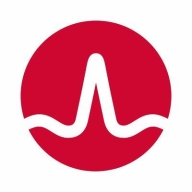

Nolio Release Automation and Microsoft Azure DevOps are both prominent in the DevOps and automation sector, each designed to optimize software delivery processes. Microsoft Azure DevOps typically holds an advantage with its extensive feature set, which offers greater perceived value beyond just cost considerations.
Features: Nolio Release Automation is efficient in managing intricate release operations and requires minimal manual involvement, boasting robust integrations with enterprise tools. On the other hand, Microsoft Azure DevOps provides a comprehensive suite of development lifecycle tools, offering advanced CI/CD pipelines, agile project management features, and smooth cloud deployment processes.
Room for Improvement: Nolio could enhance its offerings by expanding its tool integrations and simplifying its interface for wider user adaptability. More analytics and reporting features would also benefit users. Microsoft Azure DevOps, while robust, could streamline its setup process to facilitate easier initial deployment and reduce complexity for new users. An increase in simplified customization options and enhanced offline support would augment its functionality.
Ease of Deployment and Customer Service: Nolio provides an easy deployment framework with a strong focus on enterprise integration, coupled with responsive support targeting large-scale organizations. Azure DevOps offers a streamlined deployment experience within the Azure ecosystem, though it might demand a more complex setup. It emphasizes comprehensive support with ample self-service resources.
Pricing and ROI: Nolio Release Automation stands out with competitive pricing aimed at maximizing deployment efficiency and rapid ROI. While Microsoft Azure DevOps may involve higher upfront costs, its extensive tool suite promises substantial long-term ROI through scalability and integration benefits.
On a scale of one to ten, where ten is the best, I would say ROI is an eight.
Resolving issues took time since understanding our unique problems was not always straightforward for support teams.
I would rate technical support from Microsoft for Microsoft Azure DevOps an eight out of ten.
The scalability has left me pleased, not just for our teams in Europe, the Middle East, and Asia, but as we expanded into North America, Africa, and even Australia.
Its stability might be attributed to its legacy as an on-premise solution that has been in development for more than 25 years.
There was just one time when there was some infrastructure issue from Microsoft's side, so we faced some glitches for a few minutes only, not for hours or a day.
The solution is stable, and we did not encounter any stability issues.
This might be because it is a six-year-old version, and we are supporting nearly 1,500 applications and 15,000 to 16,000 agents.
Enhanced system guidance highlighting best practices would be beneficial, especially if experienced personnel are not available for support.
Those processes are a bit difficult for some customers who may not have technical knowledge and don't go through the entire documentation.
Instead of customers having to try many options themselves, they benefit from practitioner recommendations.
It is one of the greatest tools for continuous deployment, yet its popularity remains limited.
They don't even provide a POC where you can have a sandbox or stuff that you can go through and see how exactly it's costing.
Microsoft is investing 200 billion dollars plus more for its security concerns.
I find it to be expensive.
No organization would use just one vendor, and the goal is about what works well, is scalable, performs well, and offers a reasonable total cost of ownership.
Our company organized a training session with a certified Azure expert, which was extremely beneficial for adopting best practices during the initial three months.
If considering automations, process, monitoring, and provisioning, then it is the best cloud service across all the other service providers.
| Product | Market Share (%) |
|---|---|
| Microsoft Azure DevOps | 31.2% |
| Nolio Release Automation | 1.7% |
| Other | 67.1% |


| Company Size | Count |
|---|---|
| Small Business | 42 |
| Midsize Enterprise | 27 |
| Large Enterprise | 69 |
| Company Size | Count |
|---|---|
| Small Business | 5 |
| Midsize Enterprise | 5 |
| Large Enterprise | 39 |
Microsoft Azure DevOps is a cloud service that enables developers to collaborate on code development projects and create and deploy applications quicker than ever before. The service helps unite developers, project managers, and software development experts through a collaborative experience while using the application. For the users' convenience, Azure DevOps offers the user cloud services through Azure DevOps Services or an on-premises service using Azure DevOps Server. In addition, it supports integration with additional services and adding extensions, including the ability for the user to create their own custom extensions.
Azure DevOps provides a variety of unified features that can be accessed through their web browser or IDE client, such as:
Benefits of Microsoft Azure DevOps
Microsoft Azure DevOps offers many benefits, including:
Reviews from Real Users
Microsoft Azure DevOps stands out among its competitors for a variety of reasons. Two major ones are its ability to forecast how long each task will take and the ability for users to follow the entire development process.
PeerSpot viewers note the effectiveness of this solution. An executive chief operating officer for a cloud provider notes, “We can forecast tasks and the number of hours a task will take and can compare it with how long a task actually takes.”
Carlos H., a product and system director at SPCM, writes, “I think the most usable thing is that you can follow the whole progress of the development process. This makes it very useful for us.”
CA Release Automation enables you to seamlessly connect the continuous delivery ecosystem to deliver high-quality applications faster than ever before. With this enterprise-ready solution, you can accelerate and stabilize application deployments from development to test to production. Its advanced capabilities can help you plan, manage and optimize the continuous delivery pipeline to improve release quality and efficiency. With CA Release Automation, get automated, agile release management that’s ready to work in your IT world.
We monitor all Release Automation reviews to prevent fraudulent reviews and keep review quality high. We do not post reviews by company employees or direct competitors. We validate each review for authenticity via cross-reference with LinkedIn, and personal follow-up with the reviewer when necessary.